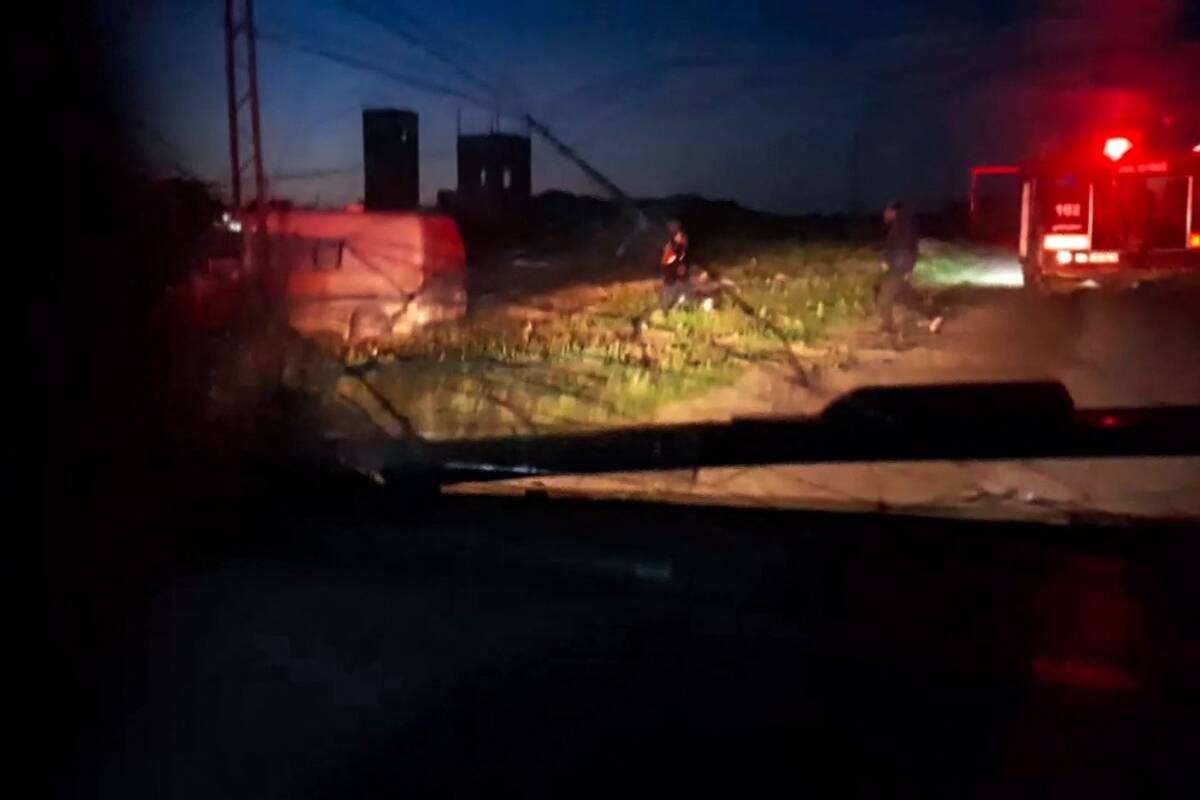BEIRUT: For the first time since the ceasefire agreement went into effect a month and four days ago, a joint patrol of the Lebanese Armed Forces and UNIFIL entered the town of Chamaa in the western sector, following the withdrawal of Israeli forces.
The army repositioned itself at various posts at the start of the ground war launched by the Israeli military, which advanced into several towns and villages across the border region. Israeli soldiers remain in some areas despite the ceasefire, continuing to demolish homes and bulldoze roads it claims are Hezbollah facilities.
Israel is carrying out a slow withdrawal from the region despite 35 days having passed since the ceasefire was agreed. The Israeli forces still have 25 days remaining before the final deadline for their complete withdrawal, during which the Lebanese military is set to deploy and work on clearing the area of illegal weapons in implementation of Resolution 1701.
Lebanese engineering teams headed to Chamaa to remove unexploded ordnance and inspect the area before stationing themselves there following the Israeli withdrawal.
Two weeks ago, the Lebanese military entered Khiam, working to open roads and seize weapons and ammunition depots found in the town and surrounding areas. It said that “there will be no weapons other than those of the Lebanese Army.”
Meanwhile, Israeli military spokesperson Avichay Adraee reiterated in a social media post a warning to “the residents of southern Lebanon not to return to their homes or move south of a line extending from Mansouri in the west to the town of Shebaa in the east, at a depth ranging between three and nine kilometers, until further notice.”
Adraee claimed that Israel “does not intend to target civilians at this stage, but anyone who decides to return to villages and areas south of this line puts themselves at great risk.”
The restricted area, where residents are barred from returning to, now encompasses 63 towns along the Lebanese-Israeli border.
In a serious incident, Israeli forces shot and wounded Charbel Choufani, a Rmeish resident, as he attempted to reach his farm near the town. Choufani was struck in the shoulder and hospitalized.
Despite the ceasefire agreement, Israeli forces have continued artillery bombardment of border areas, including strikes targeting Shebaa.
Meanwhile France’s Defense Minister Sebastien Lecornu and Foreign Minister Jean-Noel Barrot conducted their second day of diplomatic visits in southern Lebanon.
The ministers received comprehensive security briefings from Lebanese Army Brig. Gen. Gaby Lawandos, commander of the South Litani Sector, and French UNIFIL contingent representatives in Deir Kifa.
During their visit, the ministers observed joint UNIFIL-Lebanese Army armored patrols and reviewed military capabilities, including reconnaissance, transport, and Cobra battery units.
The ministers, who chose to spend their year-end holiday with French peacekeepers, shared meals with the troops.
Earlier, the French delegation met with Lebanese Army Commander Gen. Joseph Aoun and France’s representative to the Five-Party Committee monitoring the ceasefire, Brig. Gen. Guillaume Ponchin.
The ministers will attend a memorial service on Wednesday at the Pine Residence in Beirut, honoring a French peacekeeper who died in a traffic accident near Shamaa on Nov. 15 while on UNIFIL patrol duty.



























